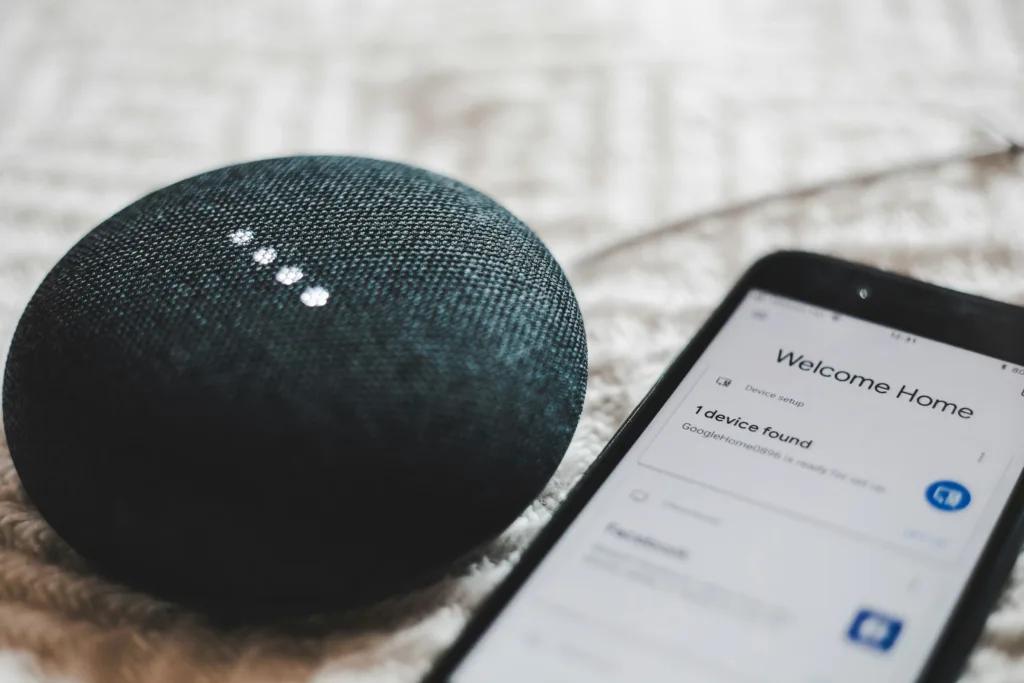
According to the Statista global retail e-commerce sales reached an estimated 5.8 trillion U.S. dollars in 2023. Estimates suggest a significant surge of 39 percent in this figure over the next few years, with projections exceeding eight trillion dollars by 2027. E-commerce is increasingly becoming dynamic as a result of technological developments that are changing the complexity of purchasing behavior and firm dynamics. By the year 2024 some trends have emerged and these are the effects of the advance use of technology in shopping experience. This article covers such trends in more detail for the reader to get the latest and relevant information regarding the impact of technology on e-commerce.
1. Artificial Intelligence and Machine Learning
AI and ML are two of the most revolutionary trends in e-commerce that help to personalize the environment, develop and cultivate superior customer service, and to increase the efficiency of operations.
Personalization: Mobile apps use AI to present suggestions based on customer’s information regarding shopping. McKinsey has compared personalization with the ability to increase the revenues by about 15%, and the satisfaction of customers by 20%. Business firms employ artificial intelligence to display products on the basis of a customer’s browsing and purchasing history and such products make its potential buyers more inclined towards the products.
Customer Service: The virtual assistants here score well on the customer satisfaction bracket as they afford 24/7 customer support by answering queries as soon as they are raised. A research done by Juniper Research revealed that at the consumer relations’ level, chatbots will also be able to save businesses three to eight billion US dollars per year by 2024 and increase reaction time by 70%.
Inventory Management: Through using machine learning models the service is capable of foreseeing demand patterns enabling companies to administrate inventories. This helps to avoid cases of having excess stock or running out of certain that are popular in the market. Also reported by Deloitte, AI can halve the errors within supply chain forecasting and decrease inventory carrying costs by a fifth.
2. Augmented Reality and Virtual Reality
First, almost every business has adopted mobile devices, Augmented Reality (AR) and Virtual Reality (VR) to create Virtual Showrooms for online customers.
Virtual Try-Ons: This brings better customer satisfaction since they are able to ‘wear’ clothes, and use accessories and makeup without returning the products since they would have seen how it looks on them first. As with 70% of enterprises planning to incorporate some sort of VR/AR into their strategies by 2025, AR is ready to take the customer experience of online shopping to the next level. The case of Sephora implementing AR on lip color tests and the use of IKEA’s augmented reality apps shows how AR can increase customer satisfaction.
Product Visualization: VR allows customers to explore virtual showrooms and experience products in 3D before making a purchase. This is particularly useful for high-value items like furniture and automobiles. The AR and VR market is expected to grow to $72.8 billion by 2024, reflecting the increasing importance of these technologies in e-commerce. Companies like Audi are offering virtual test drives, providing a realistic experience without the need to visit a showroom.
3. Voice Commerce
The purchase through voice is slowly becoming popular as more and more customers use voice assistants such as Amazon Alexa, Google Home, or Apple’s Siri to make purchases.
Convenience: Voice-activated shopping means that through voice commands consumers can shop, track order status and obtain information on products. Currently, voice commerce sales stand at $3 billion in the US and $300 million in the UK but they are projected to grow to $40 billion in the US, $5 billion in the UK by 2024 making up 10% of all the e-commerce sales. Merchants are adjusting for the voice search to make shopping even more convenient for the consumers.
Search Optimization: Companies are localizing their content to voice search to enhance visibility so as to generate more sales. This entails employing natural language processing (NLP) and centering on conversational keywords; currently, 27% of the world’s Internet users use voice search on their hand-held devices. Voice SEO is now an important aspect of the marketing strategies because many companies are now turning in towards content optimization for voice searches.
4. Mobile Commerce
M-commerce, which has become a part of the general mobile commerce concept, remains a prominent feature of online shopping, enabled by the fact that smartphones are now seen as the primary means of accessing the Internet.
User Experience: Shopping via mobile phones is inevitable and thus, the need to address those shoppers through websites that are friendly with the internet apps. The functionalities such as ‘one-click-buy’ feature, mobile wallet, and application-based alerts are value-added services. It identified that mobile commerce contributed $ 1.181 billion to $ 1.665 billion for the e-commerce sales in 2021 and it will further increase for $ 1.684 billion to $ 2277 billion in 2024 and share of mobile commerce would be 73 % and 79 % respectively. New concepts such as Progressive Web Apps (PWAs) are delivering the look and feel of the apps without having the user to install the app which will help to increase the m-commerce in near future.
Social Commerce: Currently, many social networks such as Instagram, Facebook, and TikTok have added the option to significantly expand the buying-seller interaction with the help of shopping in the application. This trend is promoting increased developments of m commerce since US social commerce sales are predicted to rise to over $45 billion in 2025. Aspects such as the ability to buy products directly from the posts and the live shopping are turning social media into a new sales platform.
5. Blockchain and Cryptocurrency
The disruptive features and innovations of e-commerce relate to the application of the blockchain and cryptocurrency as promising tools in the process.
Secure Transactions: Blockchain has the property of maintaining a shared record that retains the details of multiple transactions helping to eliminate fraud. Blockchain can lower the global payment cost by 40% and the time taken for payment processing from days to minutes, thus, improving the financial transaction in e-commerce. Currently, there are so many businesses that are adopting blockchain in their operations such as Shopify in transaction processing.
Cryptocurrency Payments: There is a trend of increasing numbers of online stores that are integrating the possibility to pay with cryptocurrencies such as Bitcoin and Ethereum. Since 11% of the internet users own cryptocurrency, the focus on digital currencies for the purchase of goods in e-commerce is likely to increase. Merchants that formerly were unable to accept cryptocurrency thanks to the issue of documentation can now do so with payment gateways such as BitPay or Coinbase Commerce.
6. Sustainability and Ethical Shopping
We can also discuss about the change of the consumer behavior that people are more concerned with the sustainably sourced products and products from ethical channels, thus affecting e-commerce business.
Eco-Friendly Products: This means that corporations are availing more sustainable goods and clear supply chain systems since they are demanded by the public. In today’s world, 73% of consumers globally have shown the willingness to shift their consumption behaviors in order to become more environmentally friendly, due to which sustainability will play a significant role in e-commerce. That is why companies like Patagonia and Everlane are among the pioneers who call consumers’ attention to the eco-friendliness of their products and show them all possible details about the production process.
Circular Economy: Nowadays e-commerce platforms are implementing a circular economy, encouraging people to use reusable products, and turning to second hand, upcycling and recycling industries. Applications of circular economy best practices could create up to $4. By 2030, hopes that sustainability measures will generate $5 trillion in total benefits of all kinds. Applications such as ThredUp and Poshmark for buying and selling second-hand articles are becoming popular as it promotes the sale of recycled materials, cutting on wastage.
7. Subscription Services
Subscription services are becoming a popular e-commerce model, providing businesses with recurring revenue and customers with convenience.
Convenience: Another form of customized product samples that are offered as part of a regular service include the meal boxes, beauty supply and clothes among others. Subscription e-commerce in the United States alone is a $15 billion industry and is expanding at a fast pace with fifteen percent of online consumers signing up for a subscription service. Subscriptions have affected different markets by taking them to new levels of innovation such as seen with HelloFresh in food subscription or Dollar Shave Club in shaving subscription.
Customer Retention: It also provides convenience and repeated satisfaction to the end users which creates a high customer retention thus making customers’ lifetime values to be high. Subscription businesses generated about five times more in revenues than S&P 500 companies over the past decade. This way businesses can collect information on customers’ preferences and thus improve the delivery of services, shareholders satisfaction and retention.
Conclusion
Various changes in e-commerce have been pegged on technology as it improves the buying journey for customers and the running of the business entities. From the artificial intelligence and augmented reality to block chain and sustainability, the following are the trends revolutionizing the online shopping business. Thus, knowing such technological developments and assimilating them into e-commerce enterprises will help them to grow in the prevailing stiff market.
Learn more about latest trends in the world of technology:







